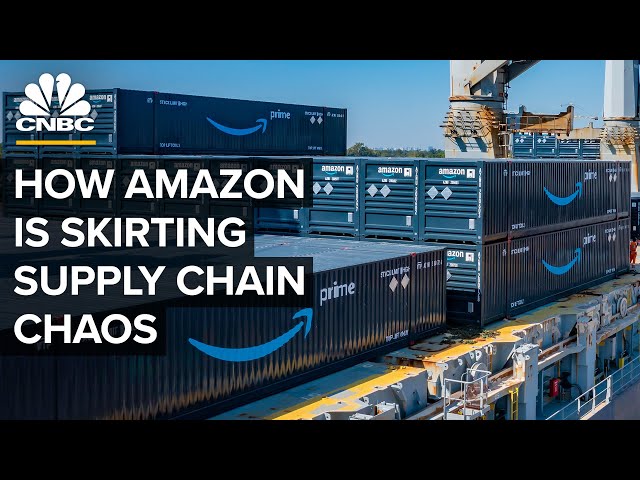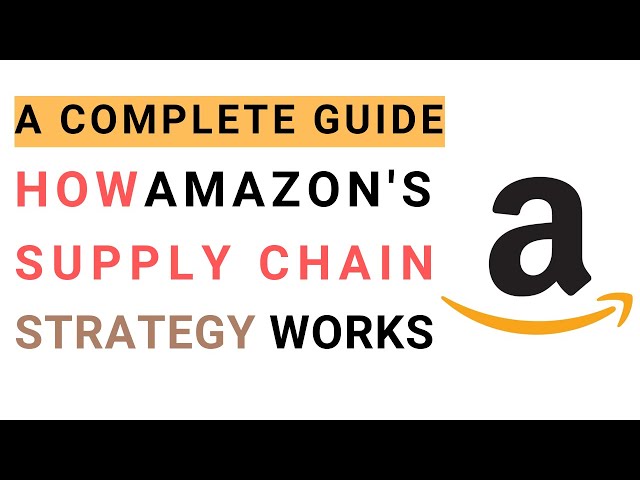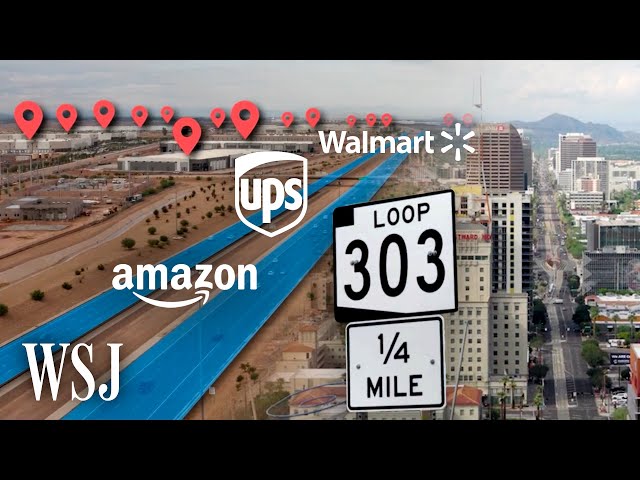Explaining Amazon Logistics and Shipping System
Amazon Logistics is the delivery and fulfillment arm of Amazon, responsible for delivering packages to customers and managing the transportation of goods from warehouses and third-party sellers to customers. Amazon has a complex and efficient logistics and shipping system that includes a network of fulfillment centers, sorting centers, delivery stations, and transportation hubs, as well as partnerships with carriers and logistics providers.
Here is an overview of how Amazon’s logistics and shipping system works:
- Order fulfillment: When a customer places an order on Amazon, the order is routed to the fulfillment center that is closest to the customer and has the item in stock. The item is then picked, packed, and shipped to the customer using one of Amazon’s delivery options, such as standard shipping, one-day shipping, or same-day delivery.
- Transportation network: Amazon uses a mix of its own transportation assets, such as planes, trucks, and vans, as well as third-party carriers and logistics providers to transport goods from warehouses and fulfillment centers to customers. Amazon also uses a network of sorting centers and delivery stations to sort and distribute packages for local delivery.
- Last mile delivery: Amazon uses a variety of delivery options for the “last mile” of delivery, including its own delivery fleet, as well as partnerships with carriers and logistics providers, and a network of independent contractors who deliver packages on behalf of Amazon through its Amazon Flex program.
- Returns and reverse logistics: Amazon has a system in place for managing returns and reverse logistics, which includes processes for inspecting, repairing, and restocking returned items, as well as disposing of damaged or defective items.
Overall, Amazon’s logistics and shipping system is designed to be efficient, cost-effective, and reliable, with a focus on delivering packages to customers quickly and at a low cost. The company continues to invest in and innovate its logistics and shipping operations, including through the use of automation, AI, and other technologies.
Amazon Last Mile Logistics
Amazon’s last-mile logistics operation is a complex and well-oiled machine, consistently delivering millions of packages to customers worldwide. Here’s a detailed breakdown:
Delivery Network:
- Own Delivery Fleet: Amazon operates its own vast fleet of delivery vehicles, including vans, trucks, and even electric delivery vehicles like the Rivian Amazon Delivery Van (RADV). This allows more control over delivery times and offers flexibility in scaling operations.
- Delivery Service Partners (DSPs): Amazon also partners with independent delivery companies, known as DSPs, to expand its reach and capacity. These DSPs are small businesses that operate under Amazon’s guidelines and utilize Amazon technology and resources.
- Third-party Carriers: For certain deliveries, especially long-distance or bulky items, Amazon may use third-party carriers like FedEx and UPS.
Delivery Options:
- Prime Delivery: Prime members benefit from free one-day and two-day delivery on eligible items.
- Same-Day Delivery: In select areas, Amazon offers same-day delivery for orders placed before a specific cutoff time.
- Scheduled Delivery: Customers can choose a specific date and time window for their delivery.
- Amazon Lockers: For added convenience, customers can choose to have their packages delivered to secure Amazon Lockers located in various convenient locations.
- Delivery Hubs: Amazon is also exploring the use of Delivery Hubs, where packages are consolidated and then delivered to smaller areas by smaller vehicles like bicycles or e-cargo bikes.
Technology and Innovation:
- Route Optimization: Amazon utilizes advanced algorithms and data analysis to optimize delivery routes, minimizing travel time and fuel consumption.
- Delivery Tracking: Customers can track their packages in real-time through the Amazon app, receiving updates on the package’s location and estimated delivery time.
- Delivery Instructions: Customers can provide specific delivery instructions, like leaving the package at the door or requiring a signature.
- Drone Delivery: While still in early stages, Amazon is exploring the use of drones for last-mile delivery in certain areas.
Benefits of Amazon’s Last-Mile Logistics:
- Fast and Reliable Delivery: Amazon’s robust network and technology ensure fast and reliable deliveries, exceeding customer expectations.
- Convenience: Customers have a wide range of delivery options to choose from, ensuring their packages arrive when and where they need them.
- Cost-Effective: Amazon’s efficient operations and scale enable cost-effective delivery, which benefits both Amazon and its customers.
- Scalability: The hybrid model of using both its own fleet and DSPs allows Amazon to quickly scale its delivery operations to meet peak demand periods.
Challenges and Future Developments:
- Rising Labor Costs: Finding and retaining delivery drivers can be challenging due to rising labor costs and competition.
- Environmental Impact: The large fleet of delivery vehicles raises concerns about emissions and environmental impact.
- Infrastructure Limitations: Traffic congestion and lack of suitable infrastructure in certain areas can limit delivery efficiency.
- Autonomous Delivery Vehicles: Amazon is actively researching and developing autonomous delivery vehicles, which could offer significant improvements in efficiency and reduce reliance on human drivers.
Ecommerce Quotes
- “My vision is to build an e-commerce ecosystem that allows consumers and businesses to do all aspects of business online.” ~Jack Ma
- “We’ve had three big ideas at Amazon that we’ve stuck with for 18 years, and they’re the reason we’re successful: Put the customer first. Invent. And be patient.” ~Jeff Bezos
- “Communications is at the heart of ecommerce and community.” ~Meg Whitman, President, and CEO of Hewlett-Packard.
- “Chase the vision, not the money; the money will end up following you.” ~Tony Hsieh, CEO, Zappos.
- “There are two kinds of companies, those that work to try to charge more and those that work to charge less. We will be the second.” ~Jeff Bezos
- “The people who said they would never order online changed their minds due to COVID-19.” ~Dave Waters
- “Communications is at the heart of e-commerce and community.” ~Meg Whitman
- “We don’t believe the market can be dominated by one company in e-commerce in China – namely Alibaba. The Chinese market is very wide and deep, with a huge population.” ~Zhang Jindong
- “Supply Chain is like nature, it is all around us.” ~Dave Waters
- “People tend to think of the web as a way to get information or perhaps as a place to carry out e-commerce. But really, the web is about accessing applications.” ~Marc Andreessen
Amazon Logistics and Supply Chain Information
- Amazon CEO Jeff Bezos Quotes.
- Amazon’s Robotic Empire: Jeff Bezos’ Smart Warehouses.
- Battle of the Robot Armies – Jeff Bezos vs Elon Musk.
- Collection of Retail Supply Chain Learning Resources.
- How Amazon Delivers Packages So Fast.
- Inside Amazon’s Smart Warehouse.
- Supply Chain Resources by Topic & Supplier.
- Tesla Logistics Empire Worth Trillions.
- Walmart CEO Doug McMillon Quotes.


